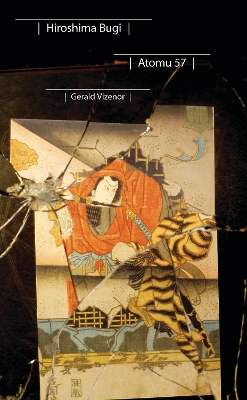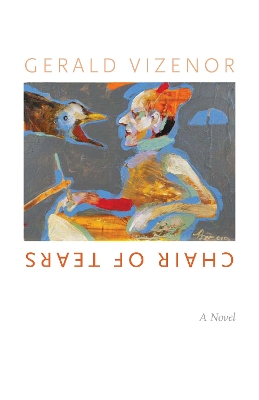Native Storiers: A Series of American Narratives
2 total works
Hiroshima Bugi is an ingenious kabuki novel that begins in the ruins of the Atomic Bomb Dome, a new Rashomon Gate. Ronin Browne, the humane peace contender, is the hafu orphan son of Okichi, a Japanese boogie-woogie dancer, and Nightbreaker, an Anishinaabe from the White Earth Reservation who served as an interpreter for General Douglas MacArthur during the first year of the American occupation in Japan. Ronin draws on samurai and native traditions to confront the moral burdens and passive notions of nuclear peace celebrated at the Peace Memorial Museum in Hiroshima. He creates a new calendar that starts with the first use of atomic weapons, Atomu One. Ronin accosts the spirits of the war dead at Yasukuni Jinga. He then marches into the national shrine and shouts to Tojo Hideki and other war criminals to come out and face the spirits of thousands of devoted children who were sacrificed at Hiroshima. In Hiroshima Bugi: Atomu 57 acclaimed Anishinaabe writer Gerald Vizenor has created a dynamic meditation on nuclear devastation and our inability to grasp fully its presence or its legacy
The best stories create traditions, and this novel by celebrated Native American writer Gerald Vizenor is a marvelous conjunction of trickster stories and literary ingenuity. Chair of Tears is funny, fierce, ironic, and deadly serious, a sendup of sacred poses, cultural pretensions, and familiar places from reservations to universities. The novel begins with generous stories about Captain Eighty, his young wife, the poker-playing genius named Quiver, and their children and grandchildren who live on a rustic houseboat.
Captain Shammer, an extraordinary grandson reared on the houseboat and with no formal education, is appointed the chairman of a troubled Department of Native American Indian Studies at a prominent university. Shammer is a natural enterpriser and ironic showman in the tradition of trickster stories. He arrives at the first faculty meeting dressed in the uniform of Gen. George Armstrong Custer. Native students celebrate his conversion of the department into an academic poker parlor and casino, and a panic radio station. The most sensational enterprise is the training of service mongrels to detect the absence of irony.
An irresistible novel of original ideas, Chair of Tears gets to the heart of questions about identity politics, multiculturalism, pedantry, and timely virtues.
Captain Shammer, an extraordinary grandson reared on the houseboat and with no formal education, is appointed the chairman of a troubled Department of Native American Indian Studies at a prominent university. Shammer is a natural enterpriser and ironic showman in the tradition of trickster stories. He arrives at the first faculty meeting dressed in the uniform of Gen. George Armstrong Custer. Native students celebrate his conversion of the department into an academic poker parlor and casino, and a panic radio station. The most sensational enterprise is the training of service mongrels to detect the absence of irony.
An irresistible novel of original ideas, Chair of Tears gets to the heart of questions about identity politics, multiculturalism, pedantry, and timely virtues.

